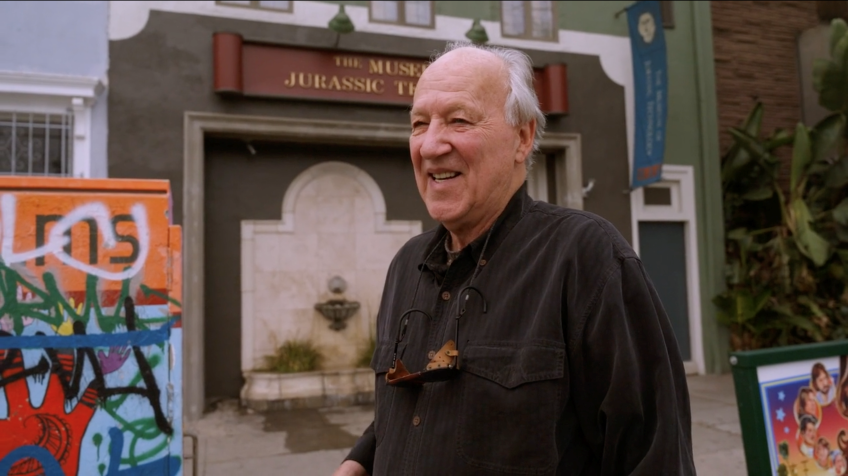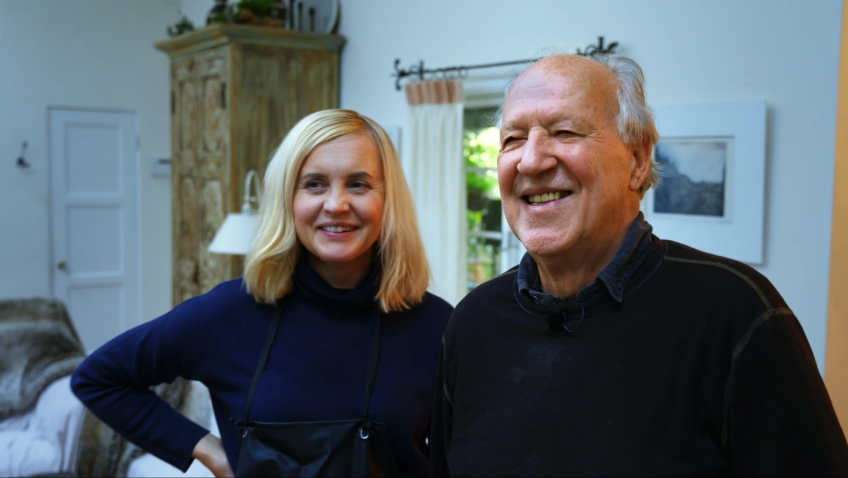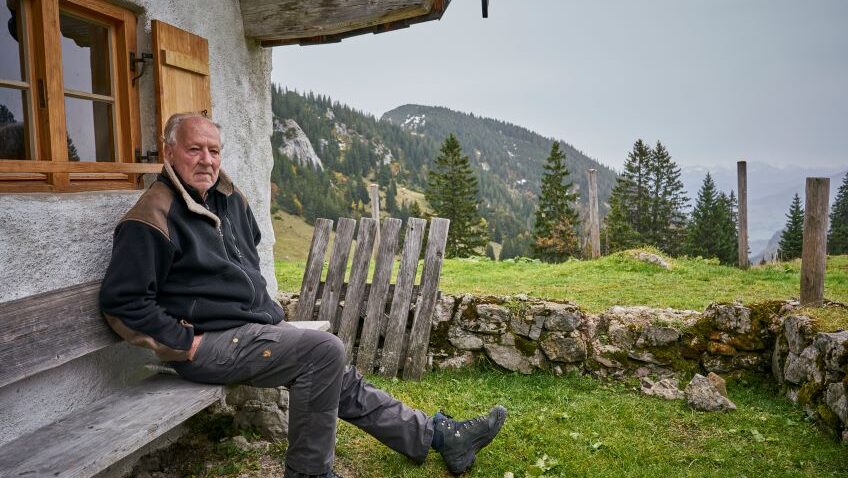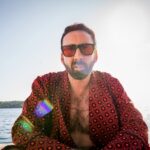Joyce Glasser reviews Werner Herzog: Radical Dreamer (January 19, 2024) in cinemas and (February 19, 2024, on BFI iplayer and DVD). Cert. 15, 90 mins.
For Werner Herzog’s 80th birthday fellow Bavarian documentary filmmaker Thomas von Steinaecker pays tribute to the larger-than-life, trailblazing, outrageously daring prolific and, yes, radical producer- writer-film-director and actor.
Through documentaries about himself (Portrait Werner Herzog, My Best Friend) and about the making of some of his most infamous films, such as Les Blank’s Burden of Dreams, focusing on the making of Fitzcarraldo; Herzog’s memoirs, Of Walking in Ice and Conquest of the Useless, and his teaching workshops such as Filming in Peru with Werner Herzog, Herzog has become a mythological figure in the myth of his own making. But here he gets help from his anecdote-telling friends, cast and crew and reverential admirers, like Steinaecker.
Radical Dreamer would be a hagiography if Herzog didn’t deserve the unilateral praises emanating from celebrities as varied as Carl Weathers, Nicole Kidman, Robert Pattinson and Chloe Zhao (who directed Nomadland). If you can’t recall off hand how these celebrities are associated with Herzog, it could be because not all of the saint’s films reach greatness. But many do, and there are enough clips to make this cradle to old-age biopic entertaining, if not particularly enlightening.
Born Werner Stipetić in Munich in the middle of WWII, Herzog’s father abandoned the family after his birth and from two weeks old until he was twelve, his mother, who had a doctorate, held the family together in the small, Alpine town of Sachrang. He and his two brothers grew up without running water, heating, toys or cinema, until a traveling projectionist came to the town. He recalls it was anarchy in a good way. Herzog’s love of nature and his fascination with speed and ski jumping, recorded in The Great Ecstasy of Woodcarver Steiner comes from this time.

After the war, the family moved to Munich where he briefly attended university, started making films and adopted his father’s name, Herzog, perhaps for commercial reasons. While both Sachrang and Munich were bombed when Werner was a toddler, unlike many German artists and filmmakers born between 1930 and 1960, such as Anselm Kiefer, Gerhard Richter, Rainer Werner Fassbinder, Volker Schlöndorff, and Christian Petzold, Herzog only touched on the period in a few films, including Signs of Life and the perhaps metaphorical Even Dwarfs Started Small.
Post War German cinema, that once inspired pioneers such as Alfred Hitchcock, was in the doldrums. Volker Schlöndorff, himself part of the New German Cinema, tells us that 1965-1966 was a watershed. Herzog’s 1967 Signs of Life did more than contribute to the new wave. It brought Herzog together with his mentor, the Jewish writer, film critic, resistance heroine and co-founder of the Cinémathèque Française, Lotte Eisner who championed the film.
We hear the moving anecdote about how, when Eisner was gravely ill in 1974, Herzog walked in the freezing cold from Munich to Paris, convinced that while he was walking, she could not die. In contrast to the novel and film The Unlikely Pilgrimage of Harold Fry, which imagines a similar scenario, Herzog’s determination and sincerity seems to have kept Eisner alive – for another eight years.
Steinaecker believes that most Germans know Herzog as the audacious director of his historical adventure/explorer films set in hostile environments such as Aquirre, the Wrath of God and Fitzcarraldo, whereas most Americas know him for his feature documentaries like Grizzly Man that he began making upon moving to Los Angeles, after the disastrous Cobra Verde. This view might have changed with films such as the triumphant Bad Lieutenant: Port of Call New Orleans starring Nicolas Cage not to mention streaming services.
We hear that Herzog’s major regret is not being able to fly. This might account for his films about flight as diverse as The White Diamond and The Flying Doctors of East Africa. Or this obsession might have originated with the discovery that had he not changed his plans at the last minute, he would have boarded LANSA flight 508 that crashed in the Amazon. After that shock, he made the film Wings of Hope about the sole survivor, 17-year-old Juliane Koepcke and the documentary Little Dieter Needs to Fly about a German born US Navy pilot shot down over Vietnam.

Little Dieter led to the harrowing feature film Rescue Dawn starring Christian Bale. It’s a shame that, in his interviews with Herzog, often in the company of Herzog’s (third) wife of 25-years, Lena Pisetski, Steinaecker does not discuss this practice of making a documentary and feature on the same or related subjects.
Although Steinaecker provides little insight into Herzog’s choice of subjects, his films tend to fit into two categories the first being exploration, adventurous pursuits and unconquered lands. These include the Peruvian films, many documentaries shot in exotic climes and his Oscar nominated Encounters at the End of the World about scientists in Antarctica. You might conclude that Herzog’s love of travel, risk, discovery and adventure is fulfilled and financed through this filmmaking.
The other category, though the two overlap to a great extent, are Herzog’s films about unusual, courageous, determined, and occasionally unbalanced and disturbed people, mostly taken from real life. Herzog is fascinated by characters including Don Lope de Aguirre, grizzly bear lover Timothy Treadwell, Mark Yavorsky, on whose life My Son, My Son What have you Done is based, and one of the rare women in his filmography, the explorer Gertrude Bell of Queen of the Desert.
It is no coincidence that while the unhinged Klaus Kinski wrecked Cobra Verde, Herzog made the documentary My Best Friend for and with the actor sometime after. And it is typical, too, that of all the actors he has worked with Herzog claims that he most admires Bruno S, the German star of The Enigma of Kaspar Hauser, based on a true tragedy. Although Bruno Schleinstein was way too old for the role and had no acting experience, he, like, Hauser, was abused as a child and Bruno S spent part of his youth in and out of mental institutions. The film, an attack on prejudice. class, and perceived intelligence, shows the ordinary villagers as surprisingly welcoming to the mentally challenged stranger who appears one cold night with a note in his hand. Along with Radical Dreamer, The Enigma of Kaspar Hauser, is featured in this month’s BFI tribute to this major international filmmaker.




